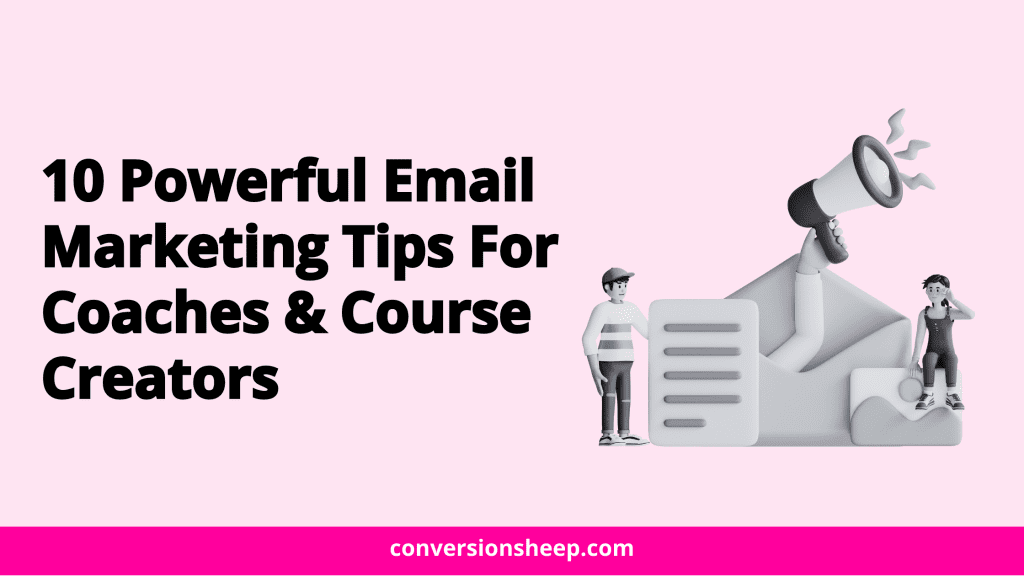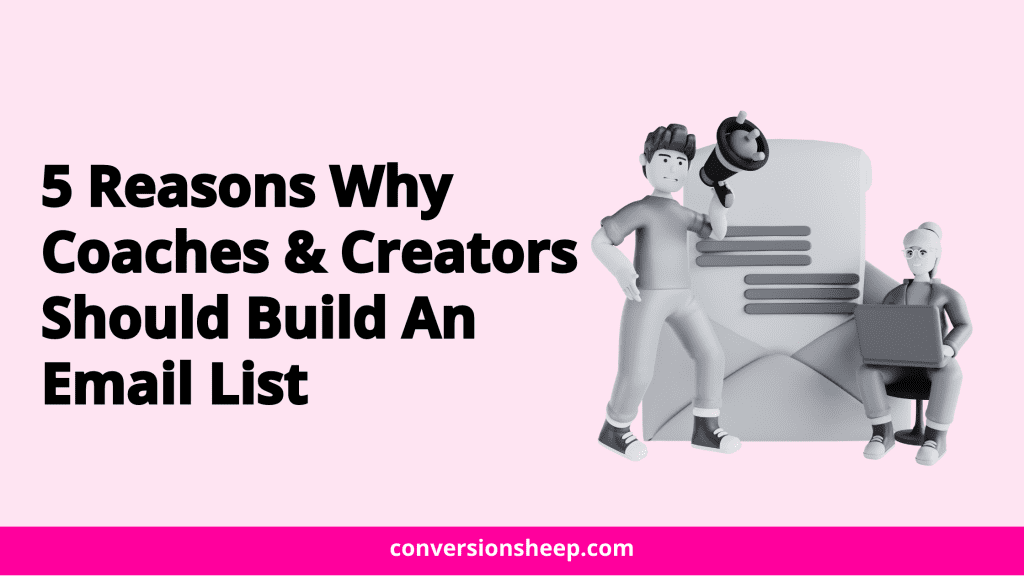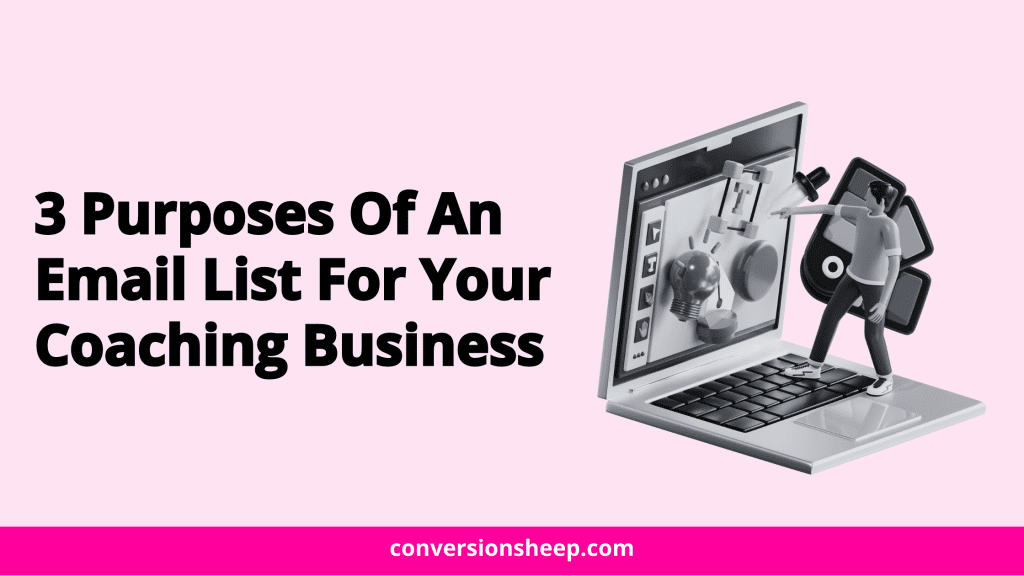Email marketing is a powerful tool for coaches looking to connect with their audience, build relationships, and grow their coaching businesses.
What you’ll learn in this article
Here are five compelling reasons why email marketing is essential for coaches and course creators
Effective Communication
Email marketing provides a direct and personalized channel of communication with your audience.
Coaches and course creators can deliver targeted messages, share valuable content, and provide updates on courses or coaching services.
This one-to-one communication fosters a sense of connection and engagement, allowing you to stay top-of-mind with your audience.
Example: Sending regular newsletters with tips, success stories, or exclusive content related to your coaching niche can keep your audience engaged and interested in your offerings.
Nurturing Relationships
Building trust and credibility is vital in coaching and course creation. Email marketing enables you to nurture relationships with your audience over time.
By consistently delivering valuable content and insights, you can establish yourself as an authority in your field.
This trust is instrumental when it comes to converting leads into clients or course participants.
Example: Implementing a drip email campaign that gradually introduces your coaching approach or course benefits can nurture leads and guide them towards a decision to engage with your services.
Targeted Marketing
Email marketing allows for precise audience segmentation.
Coaches and course creators can categorize their audience based on interests, behavior, or demographics.
This segmentation enables the delivery of highly targeted and relevant content to specific groups, increasing the likelihood of engagement and conversion.
Example: Sending personalized emails promoting a specific course to individuals who have previously expressed interest in that topic can significantly improve conversion rates.
Sales Conversion and Upselling
Email marketing is a powerful tool for driving sales and upselling additional services or courses.
By strategically crafting email campaigns, coaches and course creators can guide leads through the customer journey, from awareness to conversion.
Promotional emails, exclusive offers, and limited-time discounts can all be effectively used to boost sales.
Example: Sending a well-timed email with a special promotion for a new coaching package or an advanced course can encourage leads to take the next step.
Data-Driven Decision Making
Email marketing platforms provide valuable insights through analytics.
Coaches and course creators can track open rates, click-through rates, and conversion rates.
Analyzing this data allows for informed decision-making, helping refine marketing strategies based on what resonates most with the audience.
Example: A/B testing subject lines or content variations in emails can provide data on which approaches are more effective, allowing for continuous optimization of email campaigns.
To maximize the effectiveness of your email marketing efforts, consider implementing these 10 powerful email marketing tips
Build a Quality Email List
The foundation of successful email marketing is a high-quality email list.
Avoid purchasing email lists, as they often lead to low engagement and high spam complaints.
Instead, focus on building an organic list of subscribers who have expressed genuine interest in your coaching services.
How to do it: Create sign-up forms on your website and social media channels, offering incentives like free resources, webinars, or discounts to encourage visitors to subscribe.
Ensure that your sign-up forms are easily accessible and user-friendly.
Segment Your Email List
Segmentation involves categorizing your subscribers based on their interests, behaviors, or demographics.
By sending targeted content to specific segments, you can deliver highly relevant messages that resonate with each group.
How to do it: Start by identifying common characteristics or behaviors among your subscribers.
For example, segment your list into categories like “career coaching,” “life coaching,” and “health coaching.” Send content and offers tailored to each group’s needs.
Craft Engaging Subject Lines
The subject line is the first thing subscribers see, and it can determine whether they open your email.
Create compelling subject lines that pique curiosity, convey value, or address subscribers’ pain points.
How to do it: Use action-oriented language, such as “Unlock Your Potential with Our Coaching Program” or “Discover the Secret to Work-Life Balance.” A/B test different subject lines to find what works best for your audience.
Provide Valuable Content
Every email you send should offer value to your subscribers.
Whether it’s educational content, actionable tips, or exclusive resources, ensure that your emails provide something meaningful to your audience.
How to do it: Consider your subscribers’ pain points and questions.
Create content that answers their questions, addresses their challenges, and helps them achieve their goals. Share success stories and case studies to inspire and educate.
Use Personalization
Personalization can significantly improve email engagement.
Address subscribers by their first names and tailor the email content to their interests and preferences.
How to do it: Use email marketing software to insert subscribers’ first names into the email body and subject lines. Based on segmentation, send content that aligns with the specific interests of each group.
Optimize for Mobile
A substantial portion of email opens happens on mobile devices.
Ensure that your emails are mobile-responsive to provide a seamless and visually pleasing experience for mobile users.
How to do it: When designing your emails, use responsive templates that adapt to different screen sizes. Keep your email content concise and scannable, and use large, tapable buttons for CTAs.
Include a Clear Call to Action (CTA)
Every email should have a specific action you want subscribers to take, whether it’s scheduling a consultation, downloading a resource, or making a purchase.
Make your CTA clear and compelling.
How to do it: Use action verbs in your CTA, such as “Schedule a Free Consultation,” “Get Started Today,” or “Download Your Free E-book Now.” Place the CTA prominently in your email, and use contrasting colors to make it stand out.
Test and Optimize
Regularly testing and optimizing your email campaigns is crucial for improving their performance. A/B testing allows you to experiment with different elements, such as subject lines, email content, CTA buttons, and send times.
How to do it: Split your email list into two groups, and send different versions of the same email with one variable changed. For example, you might test two subject lines to see which one gets a higher open rate.
Analyze the results and apply the findings to future campaigns.
Monitor and Analyze Metrics
Pay attention to email marketing metrics to gauge the success of your campaigns.
Key metrics include open rates, click-through rates, conversion rates, and unsubscribe rates. Use these insights to refine your strategies.
How to do it: Most email marketing platforms provide detailed analytics.
Monitor these metrics to assess the performance of your emails. If you notice a consistently low open rate, for example, reevaluate your subject lines or content to make improvements.
Maintain Consistency
Consistency in email marketing builds trust and expectations with your subscribers.
Set a regular email schedule and stick to it. Whether it’s weekly, bi-weekly, or monthly, be predictable in your communication.
How to do it: Create an editorial calendar to plan your email content in advance. Consistency doesn’t mean sending emails just for the sake of it; it means providing value and maintaining a reliable presence in your subscribers’ inboxes.
CONCLUSION
Incorporating these email marketing tips into your coaching business can help you engage with your audience effectively, provide value, and build lasting relationships.
Email marketing is a dynamic tool that, when used wisely, can drive growth and success for your coaching business.


